Is your PnP sound device not working properly on your Windows 10 PC? If yes, then read this article and fix your audio-related issues with some tricks and tips.
Audio interfaces are at the heart of every digital studio, making it possible for people to create and play music. And hence, any problem faced in running the same is very troubling. It doesn’t matter if you have no sound, the USB ports aren’t working, or your output device doesn’t show up. How to fix problems with your Windows PC’s audio interface is what we’ll show you in this post. These problems generally occur on your PC due to outdated or missing drivers. Hence we will explain the methods to update outdated drivers and various other fixes for the same. You’ll be back in business in no time!
Tips to Fix PnP Audio Device Not Working Problem
There are various reasons why your USB PNP sound device not working properly. It can be due to the outdated audio drivers or because your system does not detect the audio device. But don’t worry, the tips below will help you fix all these issues with the help of some simple instructions, so continue reading it.
Check Whether You Are Using The Right Audio Output
If more than one audio device is connected to your computer, your computer may divert audio to a different device. For example, if your computer is already connected with the speakers and now you have plugged in a USB audio device. The music may be played from the speakers and not from the other device.
To change the settings, follow the steps below:
Step 1: Right-click on the Volume icon in the bottom right corner and select “Open Sound Settings”. You can also open it from Settings>System>Sound Menu.
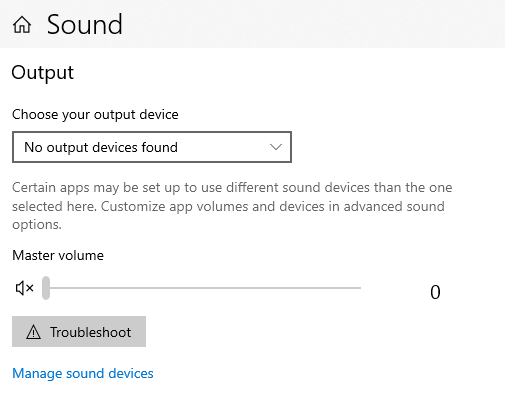
Step 2: Now, Click on “Manage sound devices” under the troubleshoot button
Step 3: In the new window, click on your audio device from which you want to play music and then click on the Test button.

Step 4: Check the button below the device. If your device is disabled, then you’ll see an Enable button. Click on that to enable your device.

If your USB audio device is working perfectly, then it is well and good. If not, then read the next tips.
Use Windows Audio Troubleshooter
Before going further, you should try to run the built-in Windows audio troubleshooter. This tool sometimes allows your Windows 10 system to automatically identify and fix the problem. To use this tool, follow these steps:
Step 1: Search for Settings in the taskbar’s search bar and press Enter.
Step 2: Select Update & Security from the list
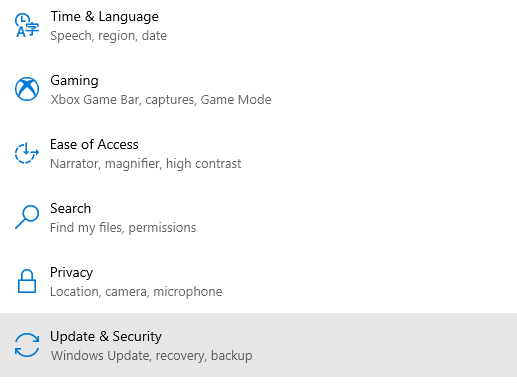
Step 3: Choose Troubleshoot on the update & security window
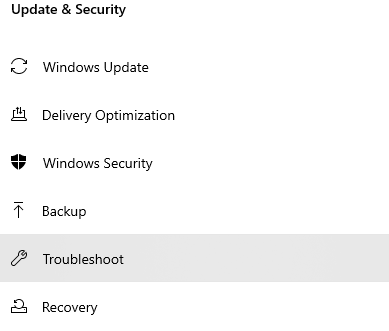
Step4: Now, click on Additional troubleshooters and then select Playing Audio
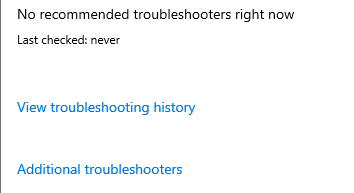
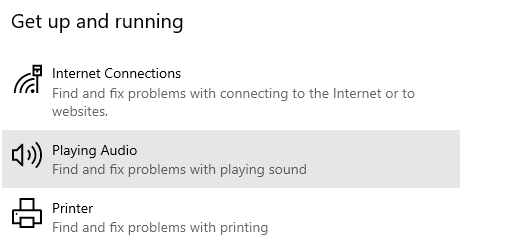
Step5: Follow the instructions, and Windows will automatically resolve the issue
After the completion of the process, Restart your computer and check whether the issue is resolved or not.
Update And Reinstall Audio Drivers
Generally, windows drivers work perfectly fine in the initial stage, but they can cause issues with time. The reason behind drivers not working properly could be because they are outdated. You may need to download or update the drivers. To update your audio drivers, follow the instructions below:
Update Audio Drivers:
Step 1: Search for Device Manager in the Taskbar and press Enter
Step 2: In the left-hand side panel, expand “Sound, Video and Game controllers”
Step 3: Now, right-click on your audio driver and select Update Driver

Step 4: A pop-up window will appear. Over there, click on the “Search automatically for drivers.”

Step5: After the process is complete, restart your computer.
Reinstall Audio Drivers:
Another major reason for such problems is corrupted or missing drivers. Under such circumstances, you need to reinstall the drivers using the below process:
Step 1: Right-click on the Windows Start button and select Device Manager from the list
Step 2: In the Device Manager window, expand the “Sound, Video and Game Controllers” and right-click on the driver under it
Step 3: Click on Uninstall device option and then click on Uninstall button in the pop-up window.
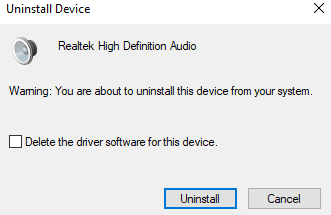
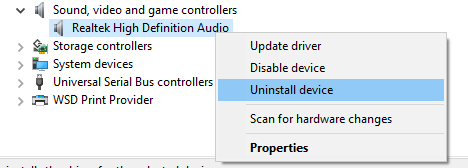
Step 4: When the process is finished, restart your computer, and your Windows PC will automatically install new audio drivers for you.
If you think that this is a tricky or complicated process, in that case, you can always download a third-party free driver updater software. These applications will help you update your drivers automatically. Here are some of the best free driver update programs for your Windows 10 PC:
Conclusion
We hope the tips and tricks mentioned above will help you fix your USB plug-and-play audio device not working. If not, or if there is any hardware problem with your audio device, the best thing to do will be to visit a repair store. And if your issue is resolved, share your thoughts in the comments section below.

